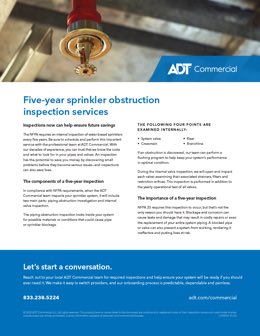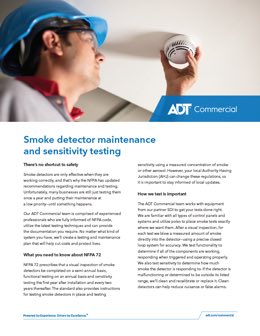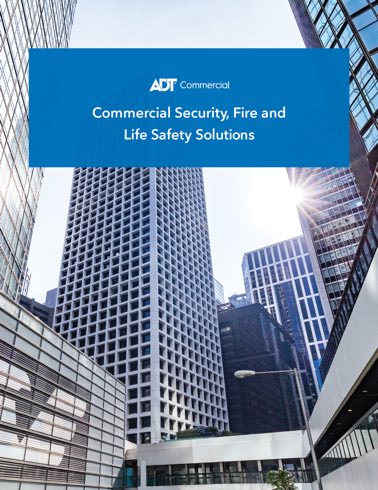Executive Summary
The COVID-19 pandemic has impacted schools across the United States, altering traditional approaches to education. Education is often predicated on building personal relationships between students, teachers, parents and administrators, who all play a vital role in ensuring that students learn in a safe and supportive environment.
Schools’ reliance on these familiar, interpersonal interactions has significantly changed over the past year. An unexpected and abrupt shift to remote teaching and learning, combined with increasingly complex caretaking responsibilities at home, has created a stressful and challenging environment. Concerns exist not only surrounding parents and caregivers who now face new responsibilities to guide their children’s learning process, but also in regards to the teachers’ well-being amidst a pandemic and their ability to effectively deliver instruction to remote students. To further one’s understanding about the evolving school policies and practices, we have highlighted several innovative solutions used in many schools today across the United States.
A great deal has changed since the onset of the pandemic as the health and well-being of students, teachers, administrators and parents is of paramount importance. As the nation continues to navigate its response to the global health crisis, companies that can drive innovation by tailoring comprehensive security solutions to meet the needs of schools will be successful in not only keeping schools safe, but also will help to lead the way to a more responsible and resilient community.
Technological Solutions
Visitor Management
New technologies provide solutions that can help K-12 schools across the country address COVID-19’s impact, empowering schools to focus on keeping their students, staff and communities safe. Some of these technologies assist in supporting visitor management practices, with solutions that pre-screen students for COVID-19 risks, reducing contact during check-in, and facilitating contact tracing.1 This technology can support the decision to allow the student to remain at school or return home. These results are collected, displayed, and reported in real time, showing school administrators which students have passed, failed or did not respond. These visitor management solutions consider a majority of factors in order to effectively screen visitors for potential COVID-19 exposure and facilitate contact tracing, allowing only approved individuals access into the school.
1. “Top Visitor Management System Software for Schools: Raptor®.” Raptor Technologies, 31 Aug. 2020, https://raptortech.com/protect-your-school/raptor-visitor-management-system/.
Emergency Management
Emergency management solutions are also available, and in some instances, can actively leverage 21st-century technology to help schools with emergency preparedness, response and recovery. While some of these systems are designed as an emergency management solution, many end-users are utilizing these systems to also help with COVID-19 response. Some of the practical applications that schools might consider include:
- Managing meal and resource distribution, analyzing real-time data in easy-to-read dashboards and downloading comprehensive reports
- Managing and reporting on cleaning services and requirements and sending automatic notifications to remind each school of upcoming services
- The ability to release students to only approved guardians by quickly searching for a student by name on a mobile device to confirm the guardian’s information
Preventive Detection
Organizations, including schools, may also use Artificial Intelligence (AI) software that combines advanced sensors, AI threat-classification, actionable entry analytics where a checkpoint system can detect a wide range of weapons and metallic or non-metallic items of interest, and cloud services to help protect students, faculty, and visitors. Solutions that use real-world threat data are available to continuously differentiate true threats from harmless objects in real time. These types of solutions help schools stay ahead of the emerging threat environment and potential vulnerabilities.
AI-based threat detection systems work to accommodate large numbers of individuals and groups per hour in a rapid, nondisruptive manner. This type of system lessens the burden on security teams and eliminates the labor and time-intensive approach that legacy weapons screening, such as metal detectors, wands and pat‑downs require.
COVID-19 has changed the way people everywhere view the serious risks associated with gathering together. The traditional high-touch entry screening is quickly becoming obsolete. Technological solutions that incorporate new screening methods while allowing people to remain socially distant can ultimately create a more safe and secure environment. The future of people screening must be touchless and digital to deal with the realities of today’s threats that not only include weapons, but unseen viruses, all while remaining scalable to prepare for threats that may emerge in the future.
Operational Resources
Within the confines of this new COVID-19 normal, the safety of students and staff must remain top-of-mind for educators and administrators. This pandemic has presented schools with an opportunity to revisit their safety and security policies and procedures. By focusing on these policies and procedures, school officials can start reviewing their operational pathways, resources and partnerships to help guide the changes needed to keep everyone, both on and off campus, safe. Communication is more important now than ever and the increased awareness to the silent struggles experienced by both students and staff is key.2
2. Henriquez, Maria. “5 Minutes with Peter George – The Rise of Physical Security Screening Technology.” Security Magazine, Security Magazine, 20 Oct. 2020, www.securitymagazine.com/articles/93682-minutes-with-peter-george-the-rise-of-physical-security-screening-technology.
Anonymous Tip Applications
Some people view anonymous tip applications as a single-purpose tool. However, the applications themselves can make a major difference in a school’s community and culture. While teachers have an indirect responsibility to report any information leading to signs of abuse or neglect of a child, students themselves often don’t feel comfortable disclosing that type of information openly and directly.
Anonymous tip applications allow students the ability to report critical information that could lead to the stopping of future events without the fear of being identified by their peers. Not only do tip applications report possible threats to the school, but they can also assist students with reporting potential self-harm or suicidal ideations without the need to walk into an administrator’s office or come face-to-face with a teacher. Brentwood Union School District in California has already implemented the “Say Something” application to empower students to take action to help prevent violence by giving them a safe place to report what they have seen or heard. Within the first 40 days of implementation, the district saw over 40 tips reported by students, 8 of which the police department went to interview the student at their home, and 6 were life‑saving tips.3
In addition to these critical applications, notification of a student showing symptoms in a classroom, a student talking about a family member being sick at home, or even just the congregation of groups larger than the maximum allowed, can all be brought to an administrator’s attention almost immediately via these solutions. By providing officials with this kind of real-time information, schools can take a necessary step forward in addressing the issues appropriately and ensure a safer learning environment.
3. Gomez, Alyana. “Say Something App for Students Addresses Suicide, Violence and Safety Concerns.” KTVU FOX 2, KTVU FOX 2, 27 Sept. 2019, www.ktvu.com/news/say-something-app-for-students-addresses-suicide-violence-and-safety-concerns.
Duress Button Applications
Applications must deliver clear and concise information in a manner that initiates both a quick reaction and an appropriate response. Both factors are critical during emergency management, regardless of the incident type.
People often think duress—frequently categorized as “panic”—buttons are only physical and mounted on walls or under a desk. While these button types are helpful in certain environments and situations, the typical school environment often includes multiple student gatherings dispersed across a large campus area. Virtual panic buttons installed on a smartphone provide the ability for teachers to initiate an emergency response faster because their phone is usually with their person, versus running to the nearest physical panic button location. In critical situations, such as in a medical emergency, school staff could activate a response, giving dispatchers their exact location and information on the type of emergency the responders should expect—all with the press of a button on their smartphone. These app-based buttons can be brought with teachers and administrators to lunchrooms, hallways or recess, making the button more practical for emergency and other notification needs.
Application-based solutions can allow administrators to communicate quickly and effectively with teachers and staff to conduct virtual health check-ins and ensure everyone is in good health upon returning to campus. These virtual health checks will become especially important when schools decide to return to the classroom as they offer another avenue to increasing the overall safety of students and staff across the country.
Opportunities for Success
The National Association of Secondary School Principals states, “School leaders must develop proactive systems to address school safety that include all stakeholders. This includes creating a personalized, safe, orderly, and inviting school environment predicated on nurturing relationships and shared responsibility.”4
We can look at schools the same way we look at any community. Schools provide safe and supportive learning environments for students, employ educators and other staff members, and enable parents and caregivers to work. Preventing the introduction and subsequent transmission of COVID-19 in schools is connected to, and dependent upon, avoiding transmission in communities.
Students and staff safety are the number one priority, and often finding the right solutions and technologies available can be difficult. Solutions should be realistic, flexible and adaptable to changing circumstances, while still executing clear communication and quick response to reduce school safety risks.
Schools must be able to open as safely as possible for in-person learning to reconvene. Applying organizational strategies and policies relevant to today’s educational challenges would strengthen partnerships between students, teachers, parents, administrators and solution providers to proactively address evolving needs of all parties.
Keeping schools safe allows children to look forward to being in a positive learning environment, and teachers and administrators an environment in which they can effectively provide instruction and guidance. To maximize community safety and prepare for reopening, administrators must think beyond the current pandemic and look towards technologies that offer multiple functions to prevent violence and create safer environments for students.
4. The Johns Hopkins University Applied Physics Laboratory in cooperation with The Johns Hopkins University School of Education, Division of Public Safety Leadership. “A Comprehensive Report on School Safety Technology”. Prepared for The Department of Justice’s National Institute of Justice (NIJ). October 2016.
Let’s start a conversation
We make it easy to switch providers, and our onboarding process is predictable, dependable and painless.





